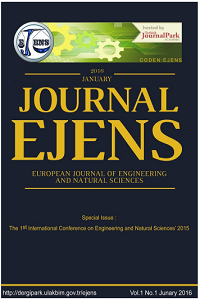PSIM Simulation of Flyback Converter for P&O and IC MPPT Algorithms
PSIM Simulation of Flyback Converter for P&O and IC MPPT Algorithms
Flyback, Maximum power point tracking (MPPT), Perturb and Observe (P&O), Incremental Conductance (IC) PSIM,
___
- [1]. M. Obi and R. Bass, “Trends and challenges of grid-connected photovoltaic systems–A review,” Renewable and Sustainable Energy Reviews, vol. 58, pp. 1082-109, 2016.
- [2]. T. K. Soon and S. Mekhilef, “A fast-converging MPPT technique for photovoltaic system under fast-varying solar irradiation and load resistance,” IEEE Transactions on Industrial Informatics, vol. 11, no. 1, pp. 176-186, Feb. 2015.
- [3]. H. T. Duru, “A maximum power tracking algorithm based on I mpp= f (P max) function for matching passive and active loads to a photovoltaic generator,” Solar Energy, vol. 80, no. 7, pp. 812-822, 2006.
- [4]. H. Bounechba, A. Bouzid, H. Snani, and A. Lashab, “Real time simulation of MPPT algorithms for PV energy system,” International Journal of Electrical Power & Energy Systems, vol. 83, pp. 67-78, 2016.
- [5]. Q. Zhang, C. Hu, L. Chen, A. Amirahmadi, N. Kutkut, Z. J. Shen, and I. Batarseh, “A center point iteration MPPT method with application on the frequency-modulated LLC microinverter,” IEEE Transactions on Power Electronics, vol. 29, no. 3, pp. 1262-1274, 2014.
- [6]. Mohammad B. Shadmand, Robert S. Balog, and Haitham Abu Rub, “Maximum Power Point Tracking using Model Predictive Control of a flyback converter for photovoltaic applications,” Power and Energy Conference at Illinois (PECI), 2014, pp. 1-5.
- [7]. Y. H. Kim, J. G. Kim, Y. H. Ji, C. Y. Won, and T. W. Lee, “Flyback inverter using voltage sensorless MPPT for AC module systems,” in Power Electronics Conference (IPEC), 2010 International IEEE, 2010, pp. 948-953.
- [8]. P. Konghuayrob and S. Kaitwanidvilai, “Maximum Power Point tracking using neural network in flyback MPPT inverter for PV systems,” in Soft Computing and Intelligent Systems (SCIS) and 13th International Symposium on Advanced Intelligent Systems (ISIS), 2012 Joint 6th International Conference on IEEE, 2012, pp. 1504-1507.
- [9]. J. Beopjun, N. Hyunjun, C. Yeonok, M. Euna, and C. GeumBae, “IncCond MPPT control using flyback converter,” in Electrical Machines and Systems (ICEMS), 2013 International Conference on IEEE, 2013, pp. 357-361.
- [10]. Z. Housheng, “Research on MPPT for Solar Cells Based on Flyback Converter,” in Intelligent Computation Technology and Automation (ICICTA), 2010 International Conference on IEEE, 2010, vol. 3, pp. 36-39.
- Başlangıç: 2015
- Yayıncı: CNR Çevre
Investigation and Evaluation of Degradability of Ibuprofen from Wastewater by Using Fenton Process
Effect of High Dosage Air-Entraining Admixture Usage on Micro Concrete Properties
Isotherm and Kinetic Modelling of Azo Dyes Adsorption
Evaluation of Commercial Type of Split Air Conditions by Using Condenser Waste Heat in a Boiler
Biodiesel Production Using Wet and Dry Purification Methods
Prediction of Dam Reservoir Volume Fluctuations Using Adaptive Neuro Fuzzy Approach
Comparison of Performance of Conventional Membrane Bioreactor with Dynamic Membrane Bioreactor
